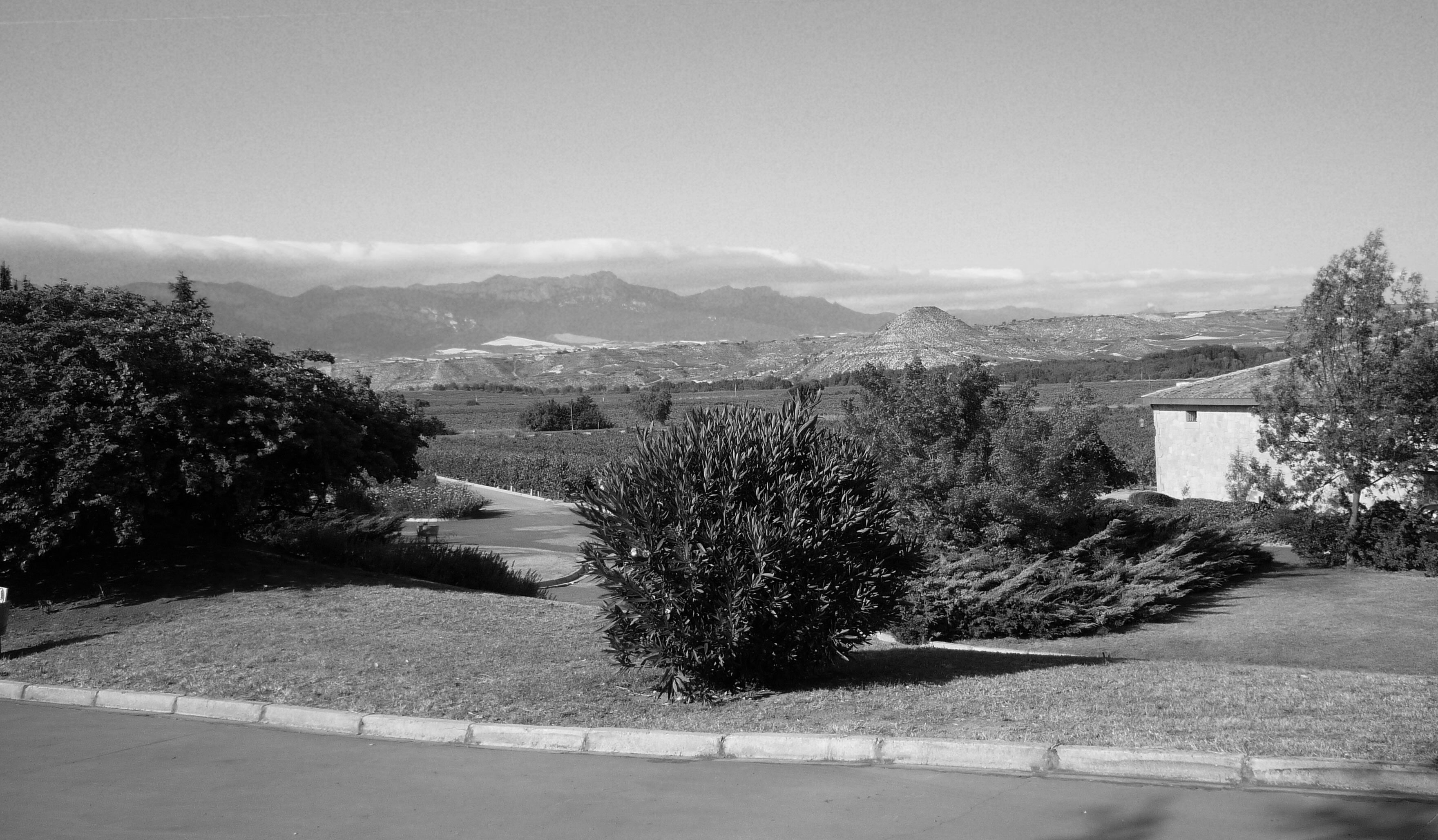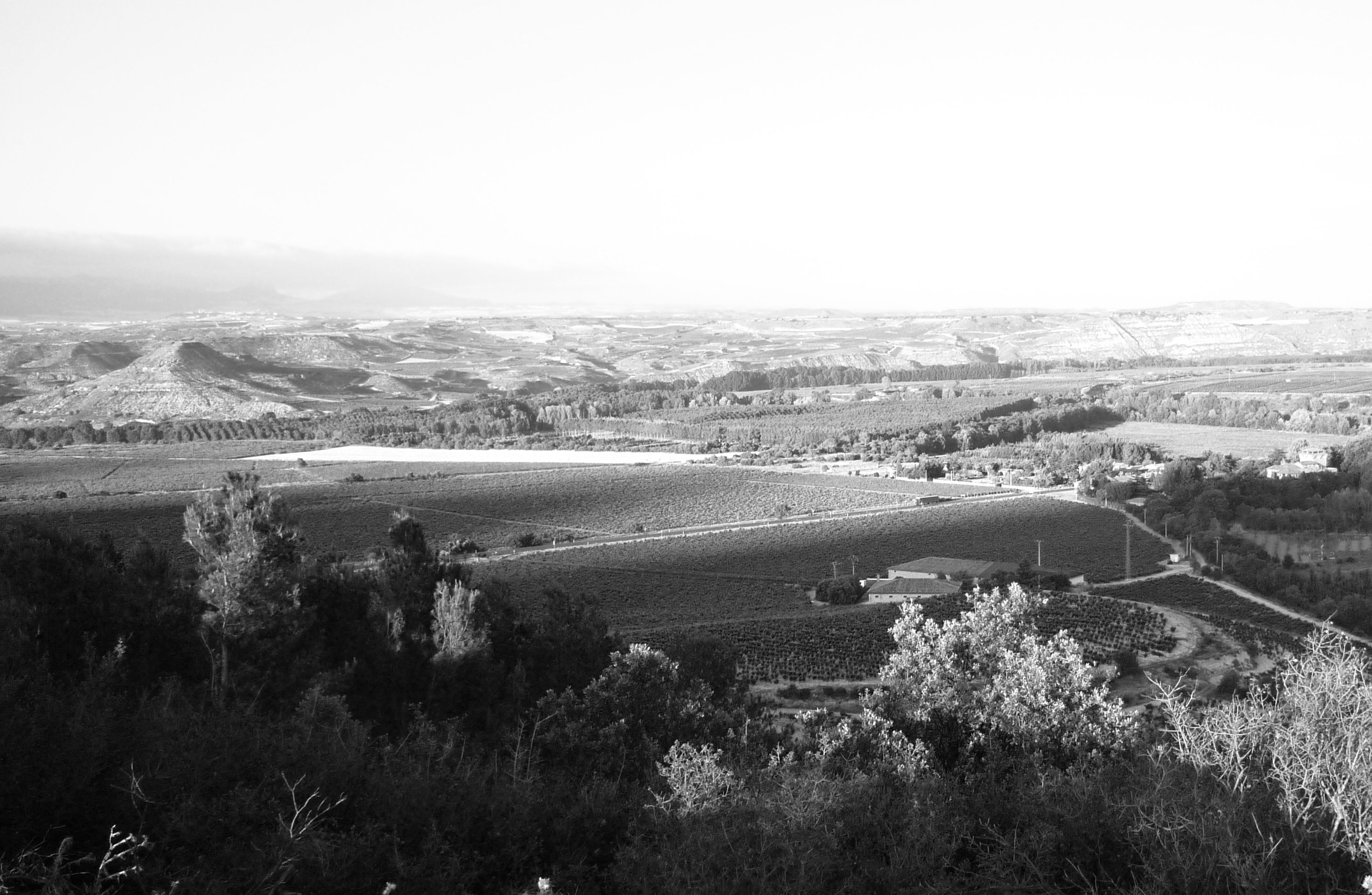
Bodegas Amézola de la Mora produces quintessentiel Rioja, from Rioja Alta. María and Cristina Amézola Downes are amongst the youngest bodega owners in the region. They have inherited a family business which has a long, interesting history, although slightly tinged with sadness.
Their father Iñigo Amézola and brother Javier began work on the on renovating the family vineyards in the 1970s and 80s. They completed the huge task of renovating the extensive 19th century, underground cellars and rebuilding the winery to re-establish the business in 1987. Their ancestors had owned land in the region for hundreds of years and the cellars were originally built by their great-great grandfather in 1816. The family Bodega later became a victim of phylloxera, as with many of the original wineries in the region, towards the end of the century. The cellars and vineyards were abandoned and left to deteriorate.
Iñigo was tragically killed in an accident in 1999 and it was left to Cristina ‘Kitty’ Amezola Downes his wife to carry on the family business with her two young daughters. Friends and family rallied round to support her. María and Cristina, were able to take an active role from 2005. They both gained experience on the winemaking and commercial sides of the business, switching roles periodically to swop responsibilities and allow time to complete their own individual studies. They have gradually put their own stamp on everything, which included radically modernising the labels. They are keen to innovate, but clearly value and are very convinced of the worth in achieving the best quality they can, with their classic style of Rioja.
Climate/Geography
Rioja Alta, the western most of the three Rioja regions in northern central Spain, reaches from Logroño the capital, to Haro, the ancient winemaking centre of the region, in the west. The vineyards are mainly south of the great River Ebro, which, with its many tributaries, flows through the heart of the whole Rioja region. The main climatic influences come from the Atlantic, only 70km away. There is generally higher rainfall here than Rioja Oriental (Baja), with some protection from the cold winds and rain provided by the Sierra de Cantabria, north of the region. Vineyards both in Rioja Alta and Alavesa tend to be at higher altitudes on, elevated hillsides, formed from eroded river terraces. Soils are clay and limestone with some parts having a ferrous content.
Torremontalbo is just west of Cenicero, it a tiny hamlet on the old main route from Logroño to Haro, N232, blink and you will miss it. The lorries go thundering past the end of drive entrance to the bodegas, to avoid the peaje on the autopista AP68 to the south. The Bodega forms its own little enclave, surrounded by its all its own vineyards. Amézola own and work entirely with their own grapes from their 60ha of vineyards.
There are stunning views of the mountains and you can sometimes make out the prevailing weather fronts held back above their peaks.

Vineyards
Amézola’s 60ha are made up of 10 parcels. Tempranillo is grown over seven of them, with one parcel each of Graciano, Mazuelo and Viura. The vines which are mostly grown as the traditional bush vines, averaging 40 to 50 years old, with oldest planted in 1970. Everything is harvested by hand to allow them the flexibility of working specific sections of individual parcels, as the grapes reach optimum ripeness. Maria explains that they work from the careful mapped characteristics for each parcel, from the knowledge gained over the years.
The Graciano vineyard ‘Barbarroja’ 4.27ha was completely replanted in 2016. As one of the oldest plots, planted in 1975/76 it was giving poor yields. Since 2011 the aim has been to replant 2 hectares every 2-3 years to replenish the vineyards and maintain the average age of the vines.
Winemaking
Georges Pauli is the consultant oenologist for Bodegas Amézola. He had previously worked as technical advisor to Château Gruaud Larose in Bordeaux. He has continued to provide stalwart advice and support to the two sisters, having originally been brought in to advise Kitty in the difficult times managing the bodega after her husband’s death. He visits regularly every month to consult with Cristina who has settled in to the winemaking role, with Maria overseeing the commercial management side.
Amézola Crianza and Reserva wines are traditional in that they retain the Mazuelo and Graciano in the blend and maintain a slightly larger proportion of American to French oak barricas of varying ages from at least two years old. There is no Graciano in any wines from 2016 to 2018 vintages, but it will return in the 2019 blends onwards. Everything is vinified by parcels or blends according to the specific vineyard selections they follow for each wine, to match quality of grapes with ageing capacity. The wines undergo a light filtration before bottling under natural cork. Their labels are an interesting modern take on tradition, created for them by Bilbao artist Pablo Ugartetxea using mixed media to create a visual collage of photography and painting.
Wines
Viña Amézola Crianza (90% Tempranillo 10% Mazuelo)
Fermented in stainless steel and aged in 40% French and 60% American oak 225L barricas for 15 months and remainder in bottle – minimum 2 years ageing is required under DOCa. The key is the softness of the oak, combined with the aromatics and spiceness of the Tempranillo, combined with excellent acidity and freshness, which makes it a classic, attractive style to enjoy.
‘Señorio’ Amézola Reserva (85% Tempranillo 10% Mazuelo 5% Graciano)
The Reserva has Tempranillo from San Quiles, which Amézola consider their best vineyard. Fermented in tank after a slightly longer maceration than the Crianza. It is aged for 22 months in the same proportions of oak and remainder in bottle – minimum 3 years ageing required under DOCa.
Iñigo Amézola Tinto, Vino do Pago (100% Tempranillo)
This is much more a 21st century style Rioja, reflecting one of the newer trends which have been explored in the region over recent years. The grapes are exclusively from the San Quiles vineyard, 550m above sea level and this cuvée is made only in the best years. It is fermented in oak and aged in new 50% French and 50% American oak barricas for 8 – 10 months, depending on the vintage. This is a much deeper coloured, concentrated, structured and more modern style of Tempranillo.
Iñigo Blanco, Reserva (100% Viura aka Macabeo)
Their Blanco comes from the solitary parcel of Viura grapes in the just over 2ha María Antoniana vineyard, planted in 1981. It has stony soils and a slightly higher clay content. Fermented and aged in new French oak with at least 4 years ageing in bottle before release. DOCa Blanco Reservas require a minimum of 2 years ageing, 6 months in oak. This is a slightly quirky white, that does not fit exactly into either category of wine making generally used for the limited production of Rioja blanco. It does have the feel of an old style, oak aged Rioja rather than the fresher, early drinking style. A lovely, food-friendly white.
www.bodegasamezola.com
| Iñigo Blanco Reserva | pack shot | fiche 2012 |
| Viña Amézola Crianza | pack shot | fiche 2016 |
| Señorio Amézola Reserva | pack shot 2014 pack shot 2015 |
fiche 2014 |
| Solar Amézola Gran Reserva | pack shot | fiche 2014 |
| Iñigo Tinto | pack shot | fiche 2017 |